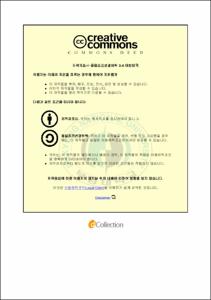유한요소법을 이용한 원자력 발전소용 쓰나미 댐퍼의 구조해석
- Abstract
- The tsunami dampers are installed on the outer wall of the nuclear power plant, it is usually the role of ventilation windows in the machine room, but when it is flowed large waves over the outer wall, is a device for preventing the flooding of the machine room . Therefore, it is necessary to have sufficient strength and rigidity to the pressure caused by the tsunami. Because of the nuclear power plant accident consists of additional damage such as a tsunami, as seen in Indonesia, 2004 and in Japan, 2012., accident of nuclear power plants is not no matter how small possibility. The tsunami damper consists of a blade and the casing and the hinge binds the two parts. In this study, through the structural analysis by changing the design parameters of the tsunami damper compare and analysis behavioral characteristics, and examined the safety. The design parameters include the number of blade bracket and blade thickness, each model compare stress and deformation. Also the seal is inserted between blade and casing, the role of seal is a sealing action to prevent water leakage when high water pressure act. Seal may occur the leaks beacause of abrasion, compression or aging. The flooding of the machine room has caused an expected phenomenon, safety of the seal must also ensure to plan tsunami damper’s safety. Therefore the role of sealing is also very important. Structural analysis is conducted to compare the contact characteristics of seal, in order to confirm the effective watertightness of the tsunami damper.
- Issued Date
- 2015
- Awarded Date
- 2015. 2
- Type
- Dissertation
- Publisher
- 부경대학교
- Affiliation
- 부경대학교 기계설계공학과
- Department
- 대학원 기계설계공학과
- Advisor
- 김병탁
- Table Of Contents
- Abstract iii
제 1 장 서 론 1
1.1 연구 배경 1
1.2 연구 목적 2
제 2 장 비선형 거동 이론 4
2.1 기하학적 비선형 6
2.1.1 변형률 에너지 포텐셜 7
2.1.2 Neo-Hookean 모델 9
2.1.3 Mooney-Rivlin 모델 10
2.1.4 Ogden 모델 11
2.2 재료 비선형 12
2.2.1 항복 기준 14
2.2.2 가공경화법칙 17
2.3 접촉 비선형 20
2.3.1 접촉 알고리즘 22
2.3.2 접촉 인자 24
제 3 장 모델의 수치 해석 27
3.1 해석 모델 27
3.1.1 쓰나미 댐퍼의 전체 형상 27
3.1.2 유한요소 모델 29
3.2 재료 물성치의 결정 31
3.2.1 강재의 물성 31
3.2.2 시일의 물성 32
3.3 해석 파라미터의 선정 34
3.3.1 격자의 생성 34
3.3.2 경계 조건 34
제 4 장 해석 결과 및 고찰 39
4.1 초기모델 해석 39
4.1.1 해석의 개요 39
4.1.2 초기모델의 변형 특성 41
4.1.3 초기모델의 응력 분포 특성 42
4.2 변경 모델의 가로 방향 보강효과에 대한 해석 45
4.2.1 해석의 개요 45
4.2.2 변형 특성 46
4.2.3 응력 분포 특성 48
4.3 변경 모델의 세로 방향 보강효과에 대한 해석 54
4.3.1 해석의 개요 54
4.3.2 변형 특성 55
4.3.3 응력 분포 특성 58
4.4 변경 모델의 블레이드 두께 변경에 대한 해석 63
4.4.1 해석의 초기조건 63
4.4.2 변형 특성 64
4.4.3 응력 분포 특성 66
4.5 최적모델의 해석 71
4.6 쓰나미 댐퍼 시일의 접촉 특성 73
4.6.1 응력 분포 특성 73
4.6.2 접촉 압력 분포 및 특성 75
제 5 장 결 론 79
참고문헌 81
- Degree
- Master
- Files in This Item:
-
-
Download
 유한요소법을 이용한 원자력 발전소용 쓰나미 댐퍼의 구조해석.pdf
기타 데이터 / 6.6 MB / Adobe PDF
유한요소법을 이용한 원자력 발전소용 쓰나미 댐퍼의 구조해석.pdf
기타 데이터 / 6.6 MB / Adobe PDF
-
Items in Repository are protected by copyright, with all rights reserved, unless otherwise indicated.